Gas Delivery Station
There are approximately 400 gas delivery stations in our system. Gas delivery stations are to transfer the transmitted natural gas in a regulated manner towards gas distributors and industrial consumers.
The natural gas is filtered, the pressure is set to the desired value and the appropriate temperature is ensured at the gas delivery station. The volume of the delivered natural gas is measured, and the individual components of the natural gas are identified [gas quality measurement] with the use of certified and continuously controlled measuring instruments.
The natural gas is a colorless and odorless substance in its unprocessed state and therefore to avoid accidents – i.e. to aid perception by humans – odorants are added to the natural gas.
Our gas delivery stations are continuously supervised by our regional dispatcher services 24/7, each day of the year. Such remote surveillance allows remote management and intervention. The gas delivery stations exchange data with the control facilities at the headquarters via a high-speed, protected internal IT network.
The nearly 400 gas transmission stations differ from each other in design as well. There are outdoor, flat designs, as well as gas supply technologies installed in specifically constructed structures or containers. Nevertheless, their technological functions are commonly shared features:
- filtering;
- pre-heating, heat exchange;
- pressure regulation, secure provision of pressure;
- measurement;
- odorization;
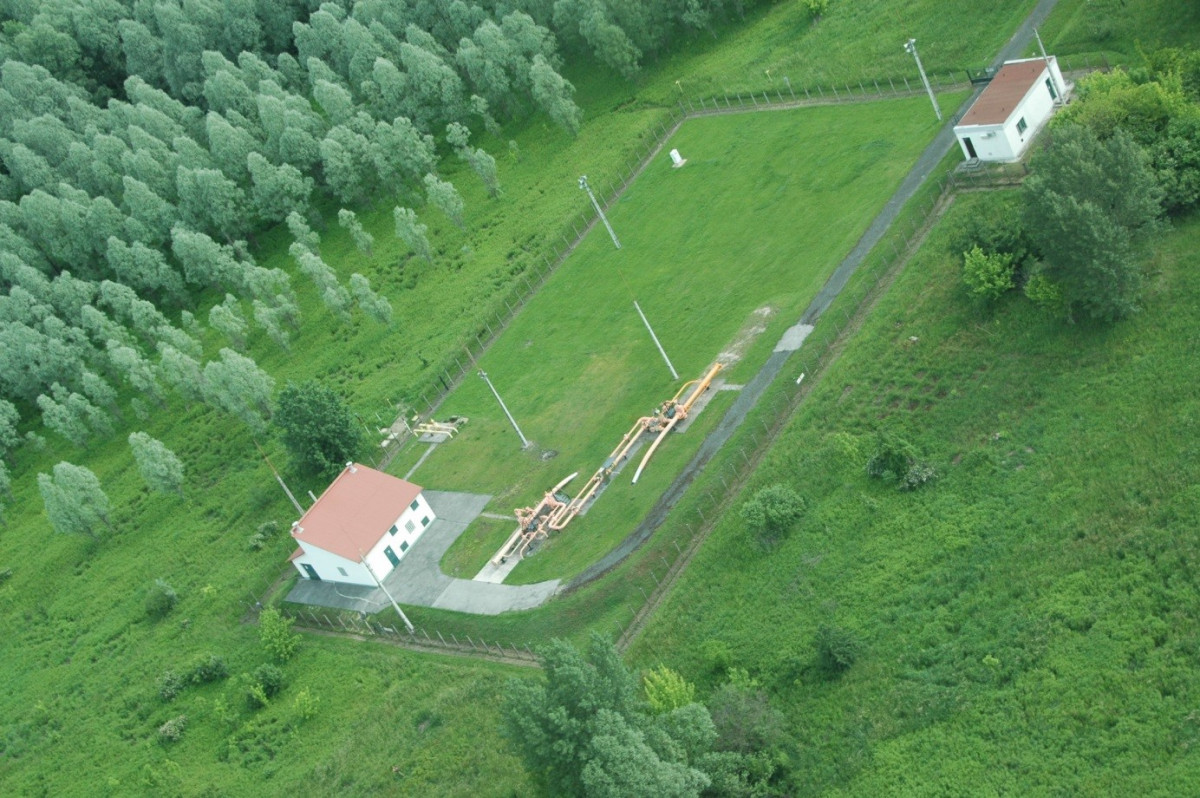
Building-type gas delivery station
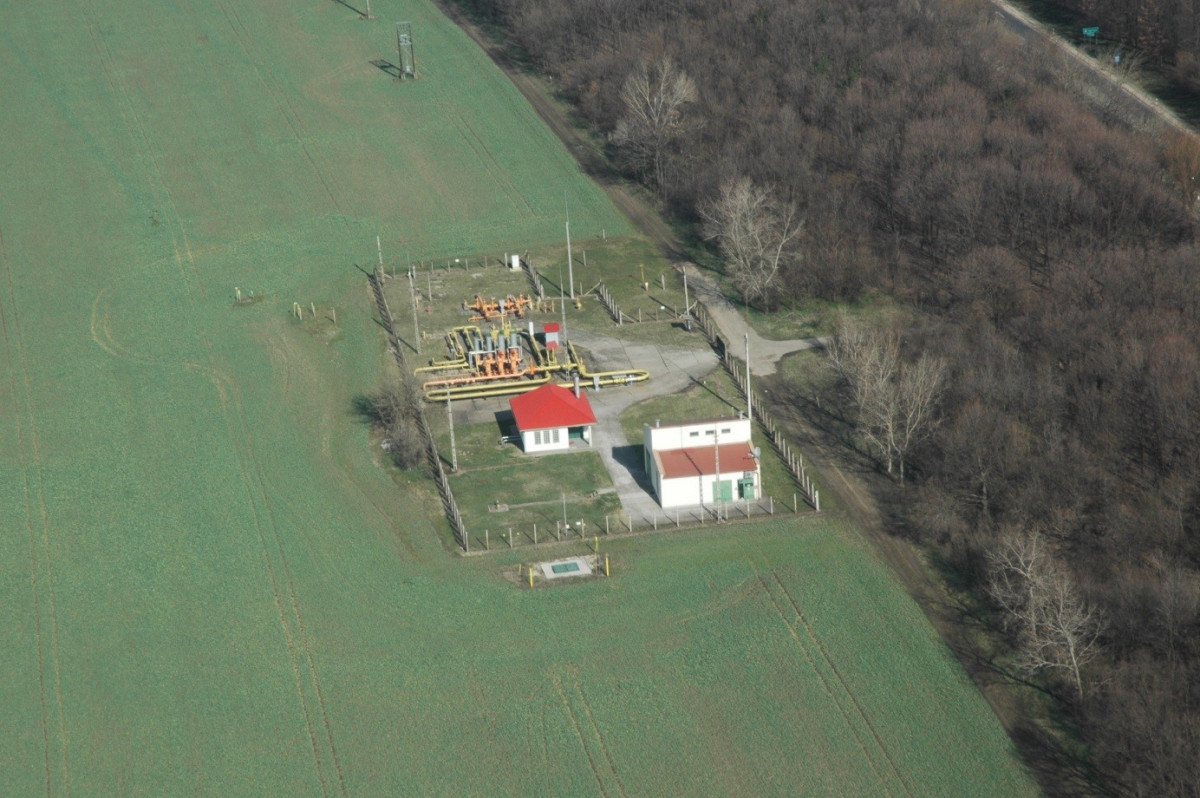
Building-type and flat-design gas delivery station
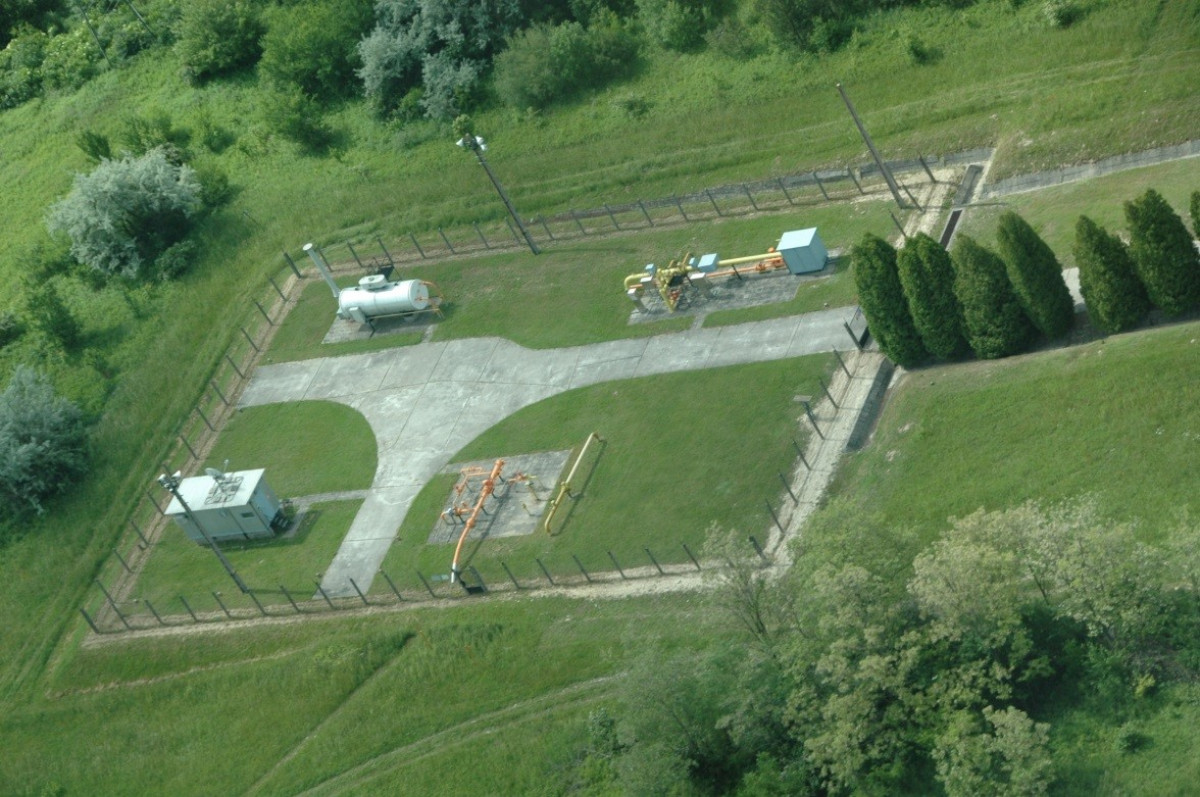
Cabinet-type gas delivery station
1. FILTERING
The high-pressure natural gas arriving via the long-distance pipeline may contain contaminations in the form of dust and liquid, therefore as a the very first step – in order to protect the subsequent technological elements – the gas is filtered at the gas delivery station. The devices are equipped with filter cartridges that best suit the given long-distance pipeline in light of several years of operating experience ensuring the highly effective separation of the types of contaminations that occur.
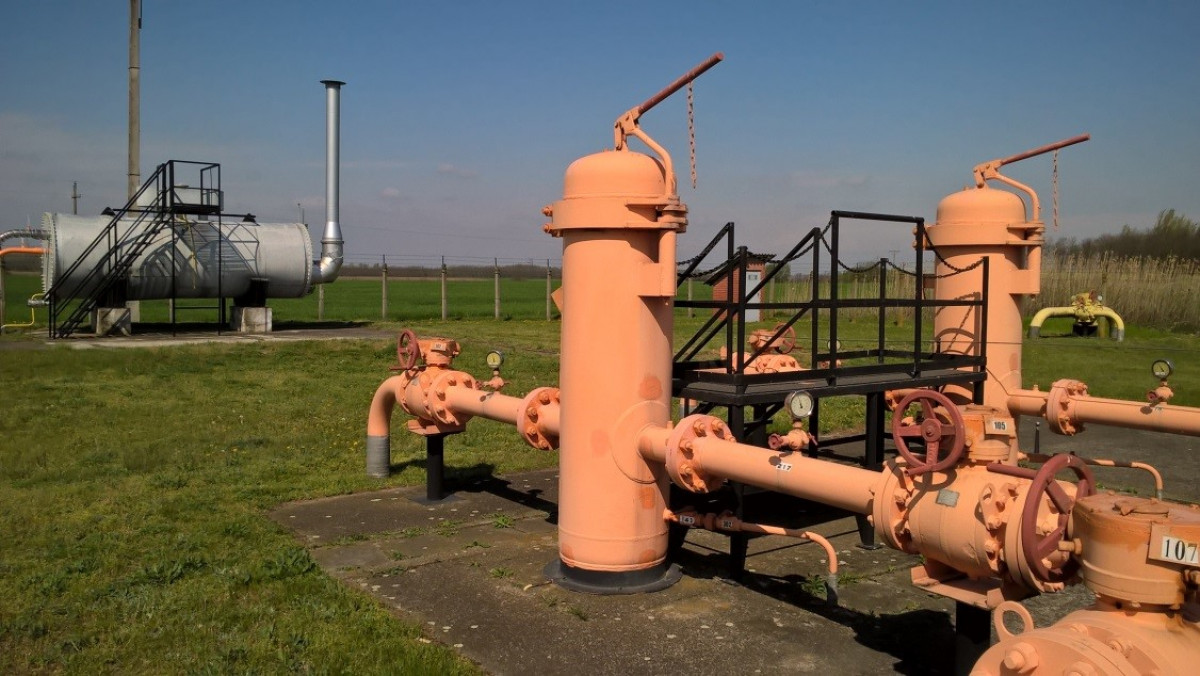
Filters with a BKG boiler in the background
2. PRE-HEATING, HEAT EXCHANGE
Have you ever heard of the Joule-Thomson effect? This is how the physical process is called that explains the fact that while the pressure of a gas is reduced, its temperature also drops considerably: by approximately 1 °C when the pressure decreases by 2 bars.
At our gas delivery stations, the extent of pressure decrease can be as large as 40–45 bars, which means – based on the foregoing – a temperature drop of 20–22 °C.
Without pre-heating, the temperature of the gas arriving from the long-distance pipeline at soil temperature (5 °C on the average) may depress to under -15 °C following regulation, which would then damage the regulating units and other technological systems.
Elements of pre-heating:
- high-performance boiler (to produce the heat to be transferred);
- heat exchanger (to transfer the heat generated by the boiler to the gas);
- temperature regulation system (to ensure that the delivered gas should be at the desired temperature in spite of the varied circumstances);
Our system also has boiler types that combine the boiler and heat exchanger in one.
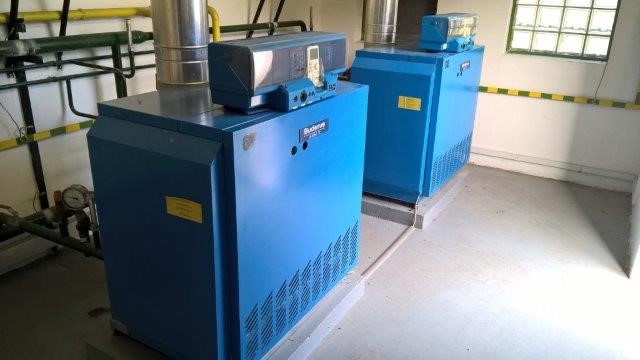
High-performance gas boilers

Heat exchanger
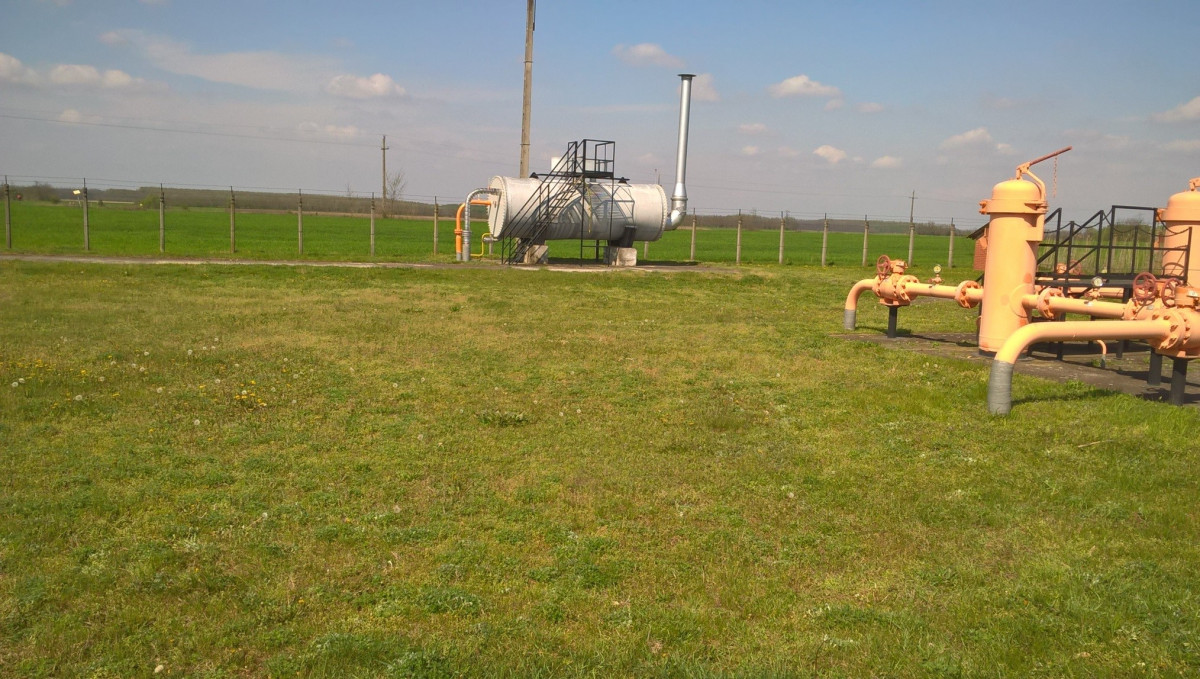
BKG type boiler (boiler + heat exchanger)
3. PRESSURE REGULATION, SECURE PROVISION OF PRESSURE
To the associated system operators (formerly gas service providers), natural gas is delivered at individually defined, contracted delivery pressure values.
Our pressure-regulating equipment units (similarly to the installations serving other functions) are duplicated devices for the security of supply, which means that in case either regulating branch fails, the backup branch will remain operable.
Most of our stations are equipped with so-called active monitoring regulators. This technology allows the automatic start-up of the backup equipment in the event of any failure, which provides further security for consumers.
The overpressure protection of the connected systems is ensured by means of slam-shut valves and safety blow-off devices.
Slam-shut valves are devices that stop gas flow in the event of any impermissible increase or decrease of the gas pressure (e.g. pipeline bursts or piercing).
Safety blow-off devices are units that prevent the emergence of such pressure levels in the pipelines that exceed the permitted values.

Pressure-regulating system of the cabinet-type gas delivery station
4. MEASUREMENT
The natural gas transmitted at the gas delivery stations must be metered at all times. This metering serves settlement purposes, therefore strict metrological requirements are applicable to the validation and calibration of the incorporated metering equipment and the technical specifications of installation.
Our system features metering devices that utilize various principles of measurement:
- ultrasonic gas flow meter, where the basis of the measurement is the time during which the ultrasonic impulse passes through the flowing gas;
- turbine type gas flow meter, where the basis of the measurement is the rotational count of the wheel rotated by the flowing gas;
- metering system based on metering orifice, where the basis of the measurement is the pressure difference generated by the gas that passes a reducing opening or orifice;
- rotary gas flow meter, where the basis of the measurement is the count of “gas volume bits” of accurately known volume;
- Coriolis gas flow meter, where the basis of the measurement is the measurement of deformation caused by the so-called Coriolis force;
The equipment units to be used at the individual positions are selected in light of the volume range to be metered and the operating pressure.
For the measurement of varied gas flows – i.e. volumes – depending on consumption the turbine type gas flow meter is used at the gas delivery stations.
In order to perform the highly precise and authentic metering of the delivered gas for settlement purposes, in relation to all the meter types, the following properties of the flowing gas need to be known:
- volume,
- temperature,
- pressure,
- accurate composition.
In the turbine type gas flow meter, the flowing gas rotates a wheel of precision bearings where the rotational speed is proportionate to the gas flow rate. The product of the flowrate and the cross-section of the flow equals to the volume flowrate that is valid at the given pressure and temperature level.
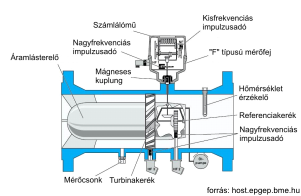
For the measurement of temperature, platinum resistance thermometers are used. The electric resistance of platinum changes with the temperature, which can be used directly for electronic processing.
Pressure is measured with electronic pressure remote transmitters. Depending on the existing pressure, the remote transmitter transforms the deformation of a flexible membrane into an electric signal and as a result it becomes transmittable.
The gas composition is measured with continuously working chromatographs. These devices sample the gas flow typically in every 4 minutes to determine the accurate composition of the natural gas. For accuracy and reliability, the equipment is calibrated daily.
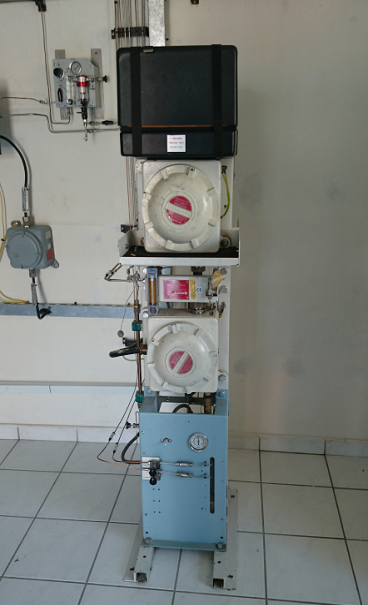
Gas-analyzing chromatograph
Based on the composition measured as described above, the energy content of the natural gas to be transmitted can be determined.
To settle the transmitted gas at the given pressure and temperature in an accurate and correct manner, it is necessary to calculate the so-called gas technological normal state from the quantity, temperature and pressure measured at the site. Based on the standard, it means gas of 101,325 Pa pressure at 15 °C (288.15 K) temperature.
These complicated calculations for adjustment are performed by the calculator of the measuring system. The data is shown and archived by the calculator and each event is recorded in the electronic log. The data generated by the calculator is accessible remotely via the computerized network and can be copied to the data carrier at the site.



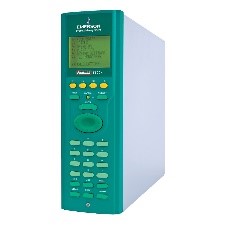
Calculators used for settlement measurements
5. ODORIZATION
Under natural circumstances, natural gas is colorless and odorless. Natural gas, as a potential source of hazard needs to be odorized for it to be recognizable. The odorant is a strong Sulphur compound that burns completely with the gas. The concentration of the odorant that is present in the natural gas provided in the form of public utility supply is very low and it is not known to be harmful to health.
Odorization is not necessary at every gas delivery station, as there are many cases when the natural gas has already undergone the process of odorization at previous hubs and therefore odorized gas circulates in the entire long-distance pipeline network. It is called central odorization.
Odorization is only performed at the gas delivery facility when it is supplied from a non-odorized section of the pipeline grid.
The odorant is injected in the flowing natural gas by special high-pressure pumps. High-precision metering equipment and control electronics ensure that the quantity of the added substance and the strength of the perceivable “odor” should comply with the standard requirements as irrespective of the fluctuating gas flow rate.

Odorizing equipment
6. MANAGEMENT OF STATIONS AND COMMUNICATION
The technologies operating the gas delivery stations do not call for permanent onsite supervision owing to the use of state-of-the-art industrial IT systems. These systems allow the remote opening and closing of the shut-off fittings that are installed at the gas delivery stations, the remote opening of pressure regulators, the reading and evaluation of all the technological data, measurement results and indications that are generated at the site. The complex management and supervision tasks are performed by programmable logic controllers (PLC) that are industrial IT devices of high reliability and availability.
All the electrical equipment used in gas technology is of explosion-proof design. This technology ensures that no fault or damage can generate electric sparks or heating to such an extent that would cause explosion.
The information produced at the gas delivery station is forwarded to the dispatching centers via our own, closed telecommunications system. Communication receives information feeds from multiple directions and is of fault-tolerant design.
The dispatching center in charge of the management of the country-wide system receives all the data of the 400 gas delivery stations in every 30 seconds!
Annually 67,500,000,000 pieces of data (yes, it is not a mistake: sixty-seven billion data elements!) are processed and archived. By analyzing this huge set of data, we can ensure the consistent enhancement of the technical standards of our services.
7. ELECTRIC POWER SUPPLY
Our gas delivery stations are operated with the use of energy purchased from electricity suppliers. The gas technology has several elements that use significant volumes of energy: high-performance electric motors to move the assemblies, electric heating for the equipment units that are sensitive to cold, highly efficient lighting for safe working processes at all times, as well as auxiliary power for the operation of electronic systems.
To ensure continuous availability – i.e. to avoid the disruption of operations due to any stoppage and outage of electric power supply –, our own non-interruptible energy supply equipment is operated at every gas delivery facility, that guarantees the functioning of the system with the provision of our own energy for 4 hours.
If there is any threat of power outage beyond this duration, our troubleshooting service teams ensure continuous power supply with the use of mobile power generators.